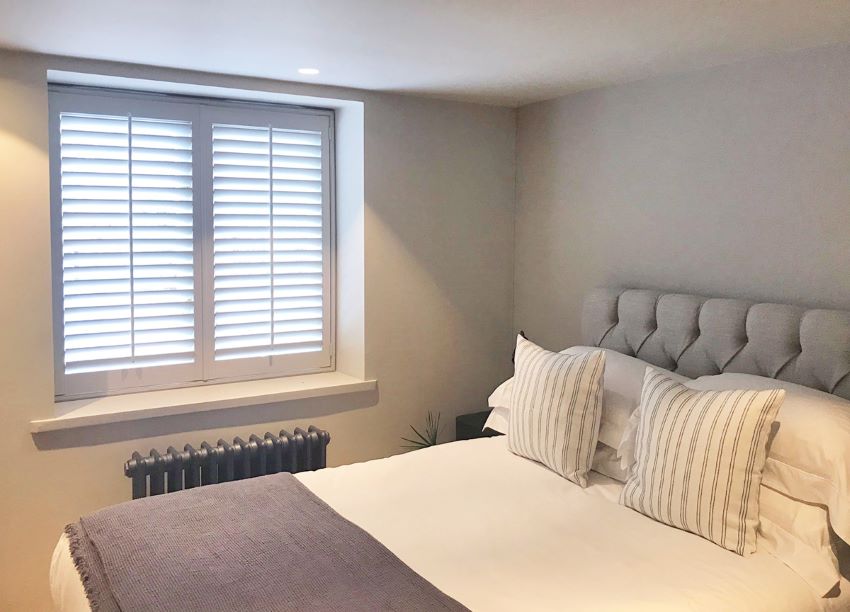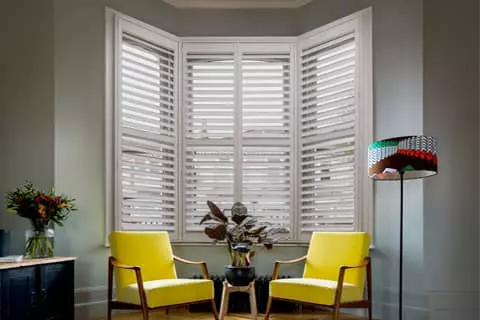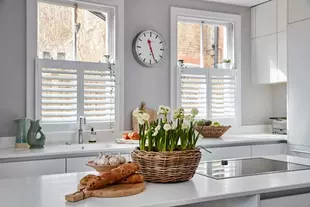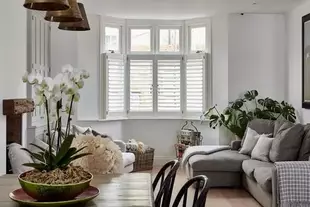When looking into new shutters the term ’tilt rod’ regularly crops up. But for those to who have never come across shutter terminology before, what is meant by a tilt rod may not be particularly clear. What exactly are tilt rods? Are they always needed? And how can shutters be controlled if tilt rods are not added to panels? We’re here to answer all of your questions.
Firstly, what exactly is a tilt rod?
A tilt rod is a rod made from the same chosen material as the shutter and is attached onto the front of slats to manoeuvre them to varying angles as required. The versatility that changes of slat angles give to shutters are one of the appealing features.
The classic style of tilt rods is to have the rod attached to the front of shutter panels and slats. Homeowners can choose from a selection of having the tilt rod central in the panel or offset to one side. If the panel is hinged to left side then it is normal for the offset tilt rod to also be placed on the left side.
A newer and more contemporary option for the slat tilt operation is to opt for a ‘without a tilt rod’ choice which is a relatively new design option for shutters. To achieve a cohesive slat movement without each of the slats being attached to a rod an additional mechanism is built into the panel. This mechanism is a cog style chain where each of the slats clip in so that when one slats is manoeuvred to an angle the rest of the slats in the section will continue to move in unison. ‘Without a tilt rod’ mechanisms do also have the choice of adding a hidden break in the panel so the slats can be split into various sections which allow each chosen section to move independently from one another which increases the versatility of the shutter use as some slat sections can be closed entirely yet others left open or tilted to a different angle so that light can still shine through into the room.
A middle ground between these two styles is a hidden tilt rod, a design feature that can commonly be confused for without a tilt rod. As the name suggests, a tilt rod is still present but is smaller and is placed at the back of slats rather than the front. This gives the illusion of there being no tilt rod and also means that, as is the case when without a tilt rod mechanism is chosen, simply pushing or pulling a single slat in the panel will move the rest.
There is no right answer as to which tilt style is the most effective in shutters as it really comes down to the design aesthetic looking to be achieved on the window. Those with a contemporary design preference will find themselves most inclined to choose the without a tilt rod option as this provides a sleek overall look to the shutter design. A central tilt rod will be more in keeping with a more traditional approach to interiors as this is a more classical shutter design.
Whether you are looking for shutters with or without a tilt rod for your windows, Plantation Shutters are the team here to help you. There are numerous ways to get in touch with our friendly experts to start your shutter journey when you are ready. You can call our office on 02088719222, email your enquiry to hello@plantation-shutters.co.uk or submit a Contact form or Online Enquiry through our website. We can’t wait to hear from you soon!





